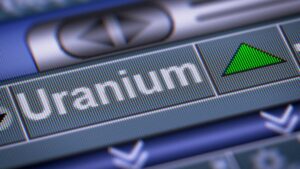Will Xanadu be the next copper and gold explorer to attract the majors?

Pic: Bloomberg Creative / Bloomberg Creative Photos via Getty Images
Special report: BHP’s arrival on the Solgold register has given rise to expectations of a takeover battle breaking out over the smaller player — with its Cascabel copper and gold discovery in Ecuador as the prize.
Coming up against BHP would be Australia’s largest gold miner, Newcrest Mining, which outlaid $23 million for an initial 10 per cet stake in Solgold in 2016 — and has since become the company’s largest shareholder with 14.5 per cent.
There is a possibility BHP and Newcrest could team up to mount a joint bid for Solgold.
But the more likely scenario is that one of the parties misses out on Cascabel and is left to look elsewhere for exposure to copper and gold assets with genuine tier one potential.
The competitive tension in the chase for Cascabel rightly suggests that there isn’t a surfeit of options in the tier one category.
But one that could appear on the radars of hungry majors like BHP and Newcrest, if it hasn’t already, is Xanadu Mines’ Kharmagtai Project in Mongolia’s South Gobi Desert.
Kharmagtai isn’t dissimilar in terms of scale and grade to Cascabel. Both deposits are also characterised by high gold-to-copper ratios, which helps greatly with economics.
But what Kharmagtai has in its favour is it sits at surface and infrastructure is readily available.
Why Kharmagtai?
According to Xanadu, the deposits that make up the current Kharmagtai resource will be mined in an open pit scenario at a grade of greater than 0.5% copper equivalent for at least 20 years.
In an underground mining scenario like that envisaged at Cascabel – large-scale block caving – a grade of at least 1% copper equivalent is typically needed for a project to be viable, which represents a significant hurdle.
Like Solgold is currently doing at Cascabel, Xanadu (ASX:XAM) is in the process of preparing a new resource estimate for Kharmagtai that is expected to add significantly to the maiden resource of 1.5 million pounds of copper and 2.2 million ounces of gold announced in March 2015.
Xanadu anticipates publishing the new resource at the end of October and says it will follow shortly thereafter with the results of a preliminary economic assessment (PEA) on a starter pit project for Kharmagtai.
Solgold is progressing a PEA on a much larger, underground development at Cascabel and is scheduled to release the findings in the March quarter next year.
The release of the Cascabel study is tipped as a potential catalyst for the anticipated corporate action, particularly if it confirms a net present value for the project in excess of $4 billion, as Solgold chief executive officer Nick Mather says it will.
Given the similarities between Cascabel and Kharmagtai, it is not difficult to mount an argument that Xanadu is undervalued.

The stock has suffered due to the uncertainty around commodity demand created by President Trump’s trade wars and has dropped back to around 13c, capitalising the company at $84 million.
Solgold, on the other hand, is valued almost ten times more at around $830 million.
There is almost certainly a “Mongolia discount” factored into Xanadu’s valuation given the perception of heightened sovereign risk that has plagued the country in the past.
But that could become harder to justify if there is substance to the recent noises coming from the Mongolian government.
Well regarded Lion Selection fund manager Hedley Widdup attended the Discover Mongolia Forum in Ulaanbaatar in early September and reported back that “there is a sense that the sands are shifting again, and this time in a positive fashion”.
- Subscribe to our daily newsletter
- Bookmark this link for small cap news
- Join our small cap Facebook group
- Follow us on Facebook or Twitter
“The Minister for Heavy Industry and Mining used the platform to make the first positive noises from a [Mongolian] mining minister for some time,” Widdup wrote in an article for Miningnews.net.
“Minister Sumiyabazar attended an entire day of the conference and had a simple message for miners: he wants to attract foreign capital to the sector, which is the largest sector of Mongolia’s economy.”
A Mongolian government more welcoming to foreign investment could be just the ticket to bring more attention to the emerging Xanadu story.
It is also worth noting that there is not yet a major, foreign controlled copper mine in Ecuador, whereas Rio Tinto’s giant Oyu Tolgoi operation has been in production in Mongolia since 2013.
In 2016 Oyu Tolgoi’s owners, Rio Tinto and Turquoise Hill Mining, approved a US$5.3 billion expansion on the mine, financed primarily by a syndicate of international banks.
Xanadu Mines is a Stockhead advertiser.
This advice has been prepared without taking into account your objectives, financial situation or needs. You should, therefore, consider the appropriateness of the advice, in light of your own objectives, financial situation or needs, before acting on the advice. If this advice relates to the acquisition, or possible acquisition, of a particular financial product, the recipient should obtain a disclosure document, a Product Disclosure Statement or an offer document (PDS) relating to the product and consider the PDS before making any decision about whether to acquire the product.
UNLOCK INSIGHTS
Discover the untold stories of emerging ASX stocks.
Daily news and expert analysis, it's free to subscribe.
By proceeding, you confirm you understand that we handle personal information in accordance with our Privacy Policy.








